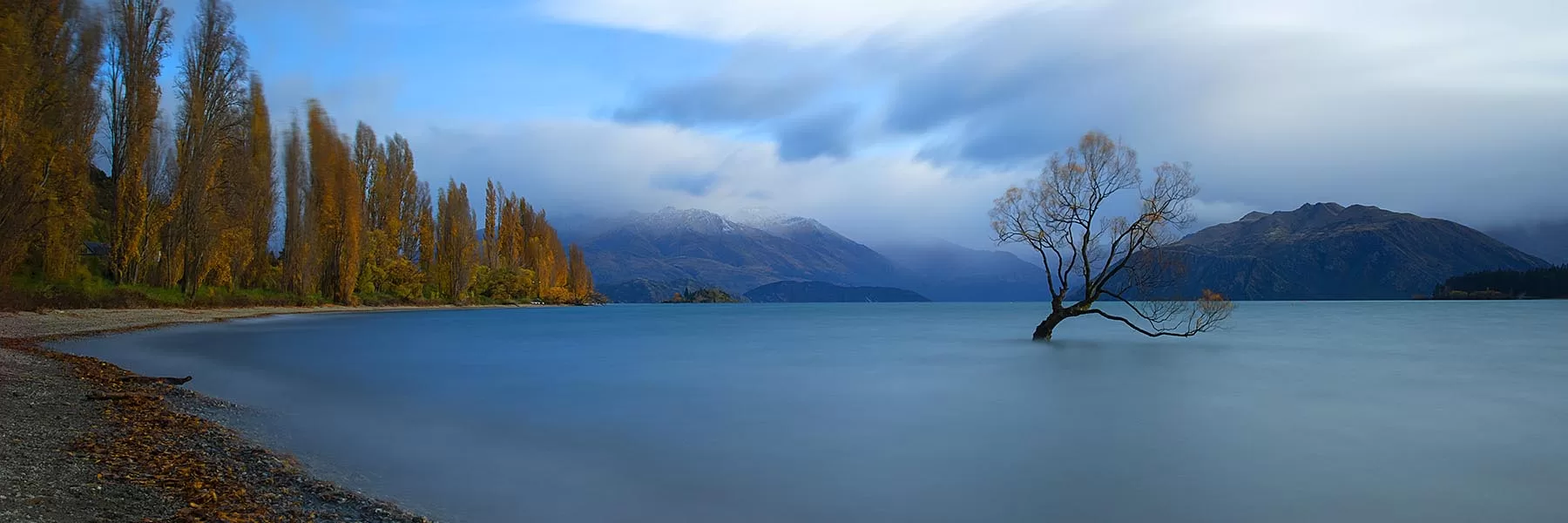One of the most interesting aspects of New Zealand is the dynamic Maori tribe.
Today, one in seven New Zealander identifies themselves as Maori. Known to be one of the central aspects of new Zealand’s identity, the Maori culture has a fascinating history.

Maori rock carvings in Lake Taupo
Here is everything you need to know about one of the most celebrated tribes in the world–Maori.
History of Maori and New Zealand
New Zealand is well-known for having a shorter human history than any other country. Most of the changes were brought by the Maori people who entered New Zealand in waves of migration.
The Maori are indigenous and part of the Polynesian people in New Zealand. They used their incredible navigation skills to make their way from Polynesian island to Aotearoa (now, New Zealand). This migration occurred approximately thousands of years ago.

An illustration of a traditional Maori waka
As there was no written language of Maori, stories, and legends were passed orally from generation to generation to keep the Maori history alive.
One of the most well-known legend tells the tales of Kupe, the first from the Maori tribe to discover New Zealand. He and his fellow members embarked from Waikiki and came across New Zealand. They traveled in wakas (large canoes) which further helped other people migrate to the island.
It is also believed that Kupe’s wife, Kuramarotini, gave New Zealand its very first name Aotearoa. After discovering this new island, Kupe and others who came along with him explored the parts of the North Island and Cook Strait.
1. The early life of Maori
New Zealand had been growing and evolving in isolation for almost 80 million years, which meant natural nature was untouched. Kupe passed his navigational and survival skills to the next generation which helped Maori people thrive in the remote island.
They hunted Moa, a native flightless bird which constituted for their high protein diet, among many other larger birds and animals. This resulted in a huge population growth which expanded from the top of the North Island up to the South.

The extinct Moa bird
However, resources started to dwindle soon after Moa and other similar species became extinct. Maori people decided to form tribes for security and fight for the resources that were left. Any tribal disputes would either be resolved through peaceful methods like diplomacy and intermarriages or in some cases, military campaigns.
These tribes would live in separate villages but retreat to ‘pa’ when they felt threatened. Pa can be referred to various settlement styles, either a Maori village, defensive settlement, or hillforts.
2. First contact with Europeans
The first European encounter with the Maori was a very short one occurring in the year 1642. It was when Abel Tasman, a Dutch seafarer, sailed from Indonesia and stopped at Golden Bay or Mohua in New Zealand. Tasman was met with a Maori tribe in their wakas.
Intrigued, Tasman lowered a boat of the crew to meet the Maori in hopes of becoming friends. This resulted in four crew members getting killed by the Maori as they rammed their boats. Tasman knew he wouldn’t be able to make contact with hostile Maori tribes in Golden bay and left the majority of the area unexplored.
After this encounter, the Maori people lived peacefully for 127 years with no contact from the outside world.
3. The arrival of Captain James Cook
In 1769, a mix of French and English people decided to contact the Maori tribes again. Under the command of Captain James Cook, the English beat the French to it. Cook mapped the coast of New Zealand to start the European migration.
Similar to Tasman’s meeting, the Maori people weren’t content with outsiders stepping into their land. When Cook sent a boat to the shore, it resulted in some Maori people getting killed. This remained a very sensitive issue in New Zealand’s history.
However, he soon became successful but before that, a conflict broke out between Cook’s boats and Maori waka. When three Maori people jumped out of their waka, they were seized by Cook. He explained to them that he wanted peace and showered them with gifts before taking them back to the shore. This is how Cook developed good relations with Maori.
4. The European settlers
In the early 1800s, whalers from America and Europe started making their way towards the Bay of Islands. They began setting up trading villages with the Maori.
A town which is now known as Russell in New Zealand was the main hub for timber and tax in the 1800s. This was also known to be New Zealand’s first capital city. Many whalers stopped in this city for rest and recreation.
Although European settlers started their trading business with Maori people, peace was still practiced through intermarriages. This was also because European wanted Maori for protection and labor while Maori needed certain European articles like the Musket.
Maori often referred to the European settlers in New Zealand as ‘Pakeha’ and soon their oral stories were converted to written form as Maori quickly adopted writing.
5. Musket wars
The ways of Western life soon found their way into the Maori lifestyle – technology, literacy, trade, religion, and muskets. The years 1818 to 1836 witnessed bloody inter-tribal wars which were commonly known as the Musket Wars.
Ngapuhi, a tribe in North Island acquired muskets through trading and raided tribes residing in the south. They would win every battle until a new tribe would get their hands over the muskets.

Musket guns
Once the Ngapuhi were defeated, other tribes would continue the war until every tribe had muskets with them. This is how the fight came to an end in the year 1836.
6. The treaty of Waitangi
In the 1830s, Christian missionaries preached to many Maori tribes and converted them into Christianity. They also introduced them to the treaty of Waitangi. This was a document that stated the agreement between the British crown and all the Maori tribes and sub-tribes.
This treaty was aimed to find a nation-state and government in New Zealand. As Maori thought of their profits with the Europeans, they signed the treaty of Waitangi. However, the document was not translated properly from English to the Maori language and caused a lot of controversies.

Reconstruction of signing the Waitangi treaty
The English version asserted that Maori had equality with the Britishers but the British will also have complete rights to the government. The Maori version promised chieftainship giving local rights of government.
The problem grew immensely when Europeans started to grow on Maori land. As a result, they lost a lot of their land in no time. This European expansion continued but Maori didn’t give up control over the land they had discovered.
Several wars broke out, starting from the 1840s where Maori and Europeans fought with each other. In particular, the Waikato War was the biggest land war to ever happen which occurred from 1863 to 1864.
Maori gave a strong fight against the European and won several the battles, even though the odds were against them. In the end, however, British resources doubled and overcame the Maori, dwindling their political independence. It finally expired in the year 1916 when police invaded the last sanctuary living in the Urewera mountains.
7. Reviving the Maori culture
After the European colonization, the Maori population reduced while the European settlers overtook them in large numbers. Strong Maori leaders, especially Apirana Ngata, fought to keep the Maori culture alive.

Apirana Ngata, a prominent Maori leader
He formed the Maori Pioneer Battalion, initiated health and land reforms, and generally promoted the Maori culture. Yet, many Maori people decide to shift to the urban areas to find work. Even if they bought their culturlal aspects to the city, they would always be subjected to westernization and were expected to assimilate with Western teachings.
Many protests were organized once people realized the severe effects European colonization had on Maori. These protests have provided fruitful results such as the Maori language education system, Maori-owned enterprises, significant political representation, and many more

A Maori warrior displaying his skills.
Today, it is widely known that Maori is a huge part of New Zealand’s identity.
Tourists and Maori
To showcase the Maori culture, New Zealand has taken various initiatives to educate people about them. There are museums solely dedicated to Maori as well as overnight stays arranged in Mares (meeting houses).
Here are some of the places in New Zealand to have the best Maori cultural experience.
1. Rotorua
Rotorua is the perfect place to visit if you want to know more about Maori history and their lifestyle. Many cultural attractions such as the Tamaki Maori village, Mitai Maori village and Te Puia offer a true Maori experience for tourists.

A legendary Maori wood carving in Rotorua
2. Bay of Islands
The most historically significant place is the Bay of Islands. You can visit the Waitangi treaty grounds where the Waitangi treaty was signed between Europeans and Maori.

Tourists enjoying a ride in the waka
Bay of Islands also offers tourists to paddle in the famous Waka of Maori.
3. Auckland
In Auckland, you can enjoy the cultural dances and songs performed in the Auckland Museum. You can also have a Marae stay and know more about the lifestyle.

A traditional Marae
4. Hokianga
On the North Island, Hokianga offers Marae stays, as well as walking tours to the largest Kauri tree in New Zealand, the Tane Mahuta. As you stroll in the Waipou forest you will learn more about the legends, myths, and stories surrounding the forest.

The picturesque Hokianga Harbour
5. Whanganui National Park
To experience a cultural journey, head to Whanganui National Park which houses an ancient forest and remains untouched from the rest of the world.

The Whanganui river flowing through the national park
New Zealand trips are never complete without experiencing the beautiful Maori culture. From their stories to their traditional songs and famous Haka dance, this mesmerizing cultural experience will make your trip memorable.
If you loved reading this story, then subscribe to our blog here (it will ask to verify your email) to get inspiring travel stories and trivia delivered to your email. Stories about wildlife trivia, cultural experiences, curated luxury hotel lists, underrated places to travel, polar journeys and much more.











